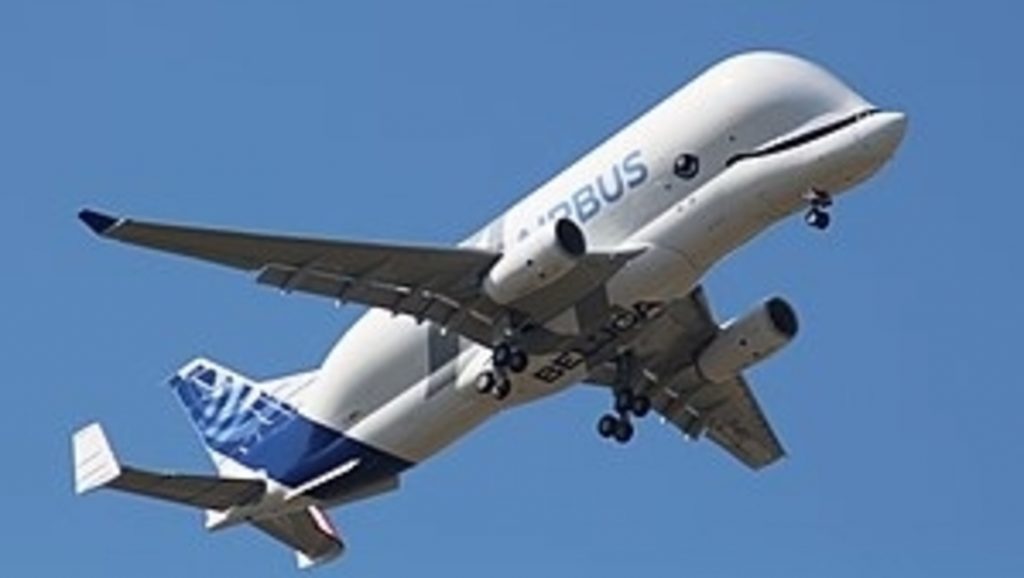
The fourth Airbus super-transporter BelugaXL ‘whale’ jet completed its three-hour maiden flight on Tuesday as it prepares to replace the BelugaST in 2023.
The cargo jet took off from Toulouse in France, commencing its initial flights before it takes over from the previous iteration, which has operated since 1994.
Airbus’s first two BelugaXL cargo jets flew above Flintshire and are now in storage for “potential future missions”, according to the planemaker.
The current version launched in 2014, supporting the A350 ramp-up and other production rate increases and was derived from the structure of the wide-body jet.
By the end of 2023, all BelugaST jets will phase out as its successor will replace the current fleet of five jets, with six new ones.
The fleet will operate across 11 European destinations according to the planemaker.
“Airbus is progressively introducing a fleet of six BelugaXLs, operated by ATI, contributing to the transformation of the industrial system and the ability to increase production in the future,” said a spokesperson.
"FOURmidable"! Our #BelugaXL 4 on its maiden flight today in Toulouse. ? ? pic.twitter.com/kSMsvccngl
— Airbus (@Airbus) July 20, 2021
Its next flight is set to be over Brighton, but no date has been announced.
The first to enter service completed first flights in January 2020, following its type certification from the European Union Aviation Safety Agency (EASA) airworthiness authority in November 2019.
“The BelugaXL has the largest cargo bay cross-section of all existing cargo aircraft,” according to Airbus’s website.
“While an A300-600ST can transport one A350 wing, the new freighter has space for two,” which is the defining reason for the upgrade.
The BelugaXL is 63 metres long and eight metres wide and can carry a maximum payload of 51 tonnes, with a range of 4,000 kilometres.
The super transporter is based off an A330-200 freighter, powered by Rolls-Royce Trent 700 engines, and reuses existing components and equipment from the previous jet.
Deeside.com noted its lower cockpit and cargo bay structure at its rear end and tail are newly developed features, giving the jet a distinctive ‘whale-like’ look.
The BelugaST – also known as A300-600ST Super Transporter – was known as being the most ‘voluminous’ cargo holds of any civil or military aircraft.
But compared to the XL, the BelugaST is 56.16 metres long with a 7.7-metre fuselage width, and maximum payload of 47 tonnes, just slightly smaller.
With over 20 years of operations, the jet was used for other Airbus payloads such as helicopters, satellite components and complete satellites.
Earlier this year, Airbus said the BelugaST will “be able to fly for many years”, so the company is looking for “possible scenarios for future operations”.
More information later this year will be revealed of the original Beluga’s future.










